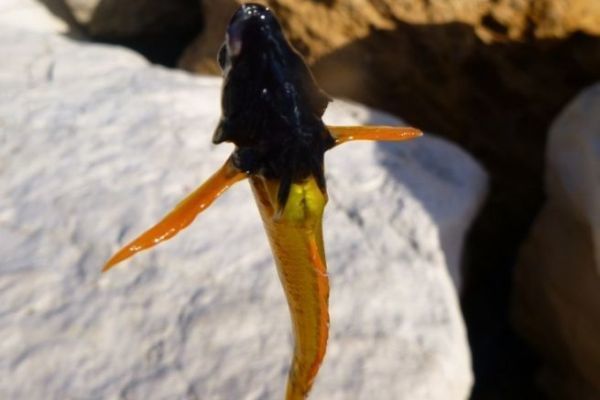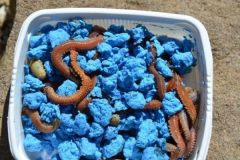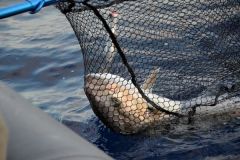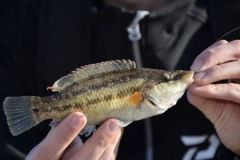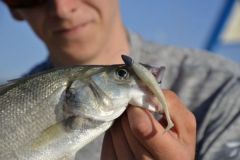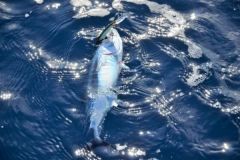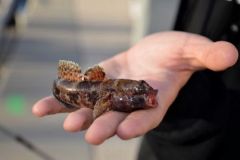Presentation of yellow tripterygion
With its scientific name of Tripterygion delaisi, the yellow tripterygion is also sometimes referred to as the yellow-billed tripterygion. This fish species is easy to recognize and not to be confused with the red triperygion (Triperygion tripteronotum). As an adult, the yellow-billed triperygion grows to barely ten centimetres.
As its name suggests, its spindle-shaped body is colored a bright yellow that would make aquarium fish pale, and features several dark stripes. Its pointed snout, like its head, turns black in males during the breeding season. The yellow triterygion's dorsal fin is divided into three parts, and above its eye is a slight tentacle.
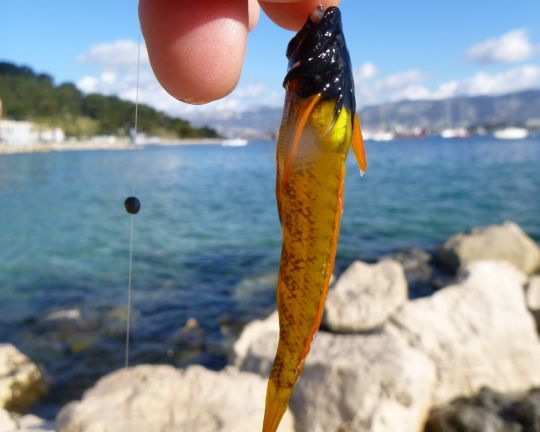
Habitat and behavior
Yellow tripterygion is very common in the Mediterranean, and can also be found on the English Channel coast, from the very first centimeters to depths of over 30 meters. Unlike the red triptérygion, the yellow triptérygion prefers rocky areas with little light. In shallow waters, less than one meter deep, it can change its behavior by exposing itself, as it competes with the red triptérygion.
The yellow triptérygion feeds mainly on small invertebrates or crustaceans.
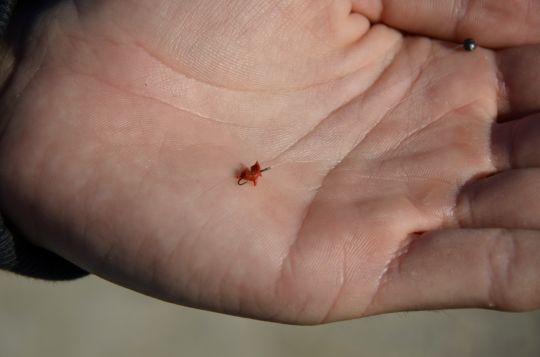
Fishing for yellow tripterygion
You may want to fish for yellow tripterygion to enjoy its beauty or to increase the number of fish species encountered. Yellow tripterygion can be caught in very little water. Fishing in very calm, clear seas, on sight, makes it easier to target.
Because of its size, the yellow triptérygion is best fished with a very fine leader (10 to 12/100) and a fine hook ranging from number 16 to number 22. Simply hook the hook with a tiny piece of shrimp or worm and walk your rig close to the bottom to see the yellow tripterygion interested in your bait. You can also use small pieces of soft lure or Power Isome which will not leave this curious and territorial little fish indifferent. One more species to discover on your fishing grounds.
